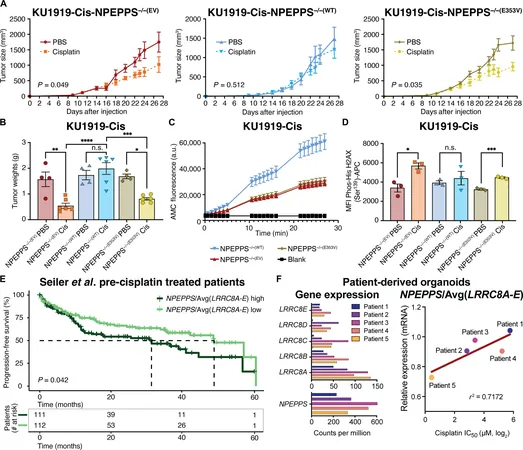
The Revolutionary Crispr Treatment for Sickle Cell Disease: A Beacon of Hope with a Rocky Road Ahead
2024-12-23
Author: Li
Introduction
In December 2023, a historic milestone in medical science was reached with the approval of Casgevy, the world’s first Crispr-based therapy aimed at treating sickle cell disease. Deshawn "DJ" Chow, a 19-year-old who has battled this debilitating condition his entire life, became one of the first patients in the United States to receive this potentially life-changing treatment after enduring years of hospital visits and severe pain crises.
Impact of Sickle Cell Disease
Sickle cell disease affects around 100,000 people in the U.S., predominantly among Black communities, leading to crescent-shaped red blood cells that obstruct blood flow and starve the body of oxygen. Chow's journey has been punctuated with episodes of excruciating pain that often left him bedridden, emphasizing the desperate need for effective treatment solutions.
The Promise of Casgevy
When Casgevy was unveiled, it offered a glimmer of hope. This trailblazing therapy leverages Crispr technology, renowned for its gene-editing capabilities, to modify the stem cells of patients and produce healthy blood cells. After receiving the treatment at the City of Hope Cancer Center in Los Angeles, Chow embarked on a lengthy recovery process, which includes intensive chemotherapy and a hospitalization period that could stretch into weeks.
Barriers to Access
Despite the promise that Casgevy holds, its rollout has been anything but swift. Complications in manufacturing, insurance hurdles, and necessary patient preparations have led to a slow start for the treatment. Only a handful of patients have received Casgevy in its initial months, as hospitals adapt to the complexities of administering this innovative therapy. Other similar treatments, such as Lyfgenia produced by Bluebird Bio, have followed in Casgevy's footsteps but are built on older technologies that introduce new genes instead of editing existing ones.
Challenges Faced by Patients
The process of receiving Casgevy is far from straightforward. It requires not only the collection and editing of a patient’s stem cells but also extensive medical oversight and a commitment to endure the side effects of chemotherapy. For Chow, this meant facing a barrage of physical and emotional challenges. "It feels like my body is on fire when the pain hits," he recalls, vividly illustrating the urgency of treatment as he prepared for what lay ahead.
Clinical Optimism and Societal Barriers
Healthcare providers are optimistic about the effectiveness of Casgevy, with clinical trials indicating that most participants have remained pain-free for extended periods. However, they caution that the demanding nature of the therapy and the inherent mistrust in new medical advancements—especially in marginalized populations—may pose barriers for widespread acceptance and adoption.
Financial Implications
The fight for access to Casgevy is also fraught with financial challenges. Priced at a staggering $2.2 million, the treatment raises questions about the viability of insurance coverage and the financial burdens on patients. While efforts are being made to address these insurance complications, including new payment programs intended to compensate providers based on patient outcomes, many hurdles still need to be overcome before Casgevy can be readily available to everyone who needs it.
Looking Ahead
As the medical community navigates these barriers, hope remains alive. Researchers are working tirelessly to find ways to reduce the intensity of chemotherapy required, paving the way for broader patient access in the future. For patients like Chow, this treatment reflects the dawn of a new era in sickle cell disease management, sparking the hope that someday, a cure could be available for all suffering from this devastating illness.
Patient Perspective
As Chow contemplates his future, he dreams not only of a life without pain crises but also of pursuing passions like snowboarding—an activity previously out of reach due to his condition. "I see a future filled with possibilities," he says. For now, he busies himself with writing rap music to entertain himself during his lengthy recovery. "It's all in God's hands," he concludes, with optimism that aligns with the revolutionary advancements in genetic medicine. The journey has only just begun.



 Brasil (PT)
Brasil (PT)
 Canada (EN)
Canada (EN)
 Chile (ES)
Chile (ES)
 España (ES)
España (ES)
 France (FR)
France (FR)
 Hong Kong (EN)
Hong Kong (EN)
 Italia (IT)
Italia (IT)
 日本 (JA)
日本 (JA)
 Magyarország (HU)
Magyarország (HU)
 Norge (NO)
Norge (NO)
 Polska (PL)
Polska (PL)
 Schweiz (DE)
Schweiz (DE)
 Singapore (EN)
Singapore (EN)
 Sverige (SV)
Sverige (SV)
 Suomi (FI)
Suomi (FI)
 Türkiye (TR)
Türkiye (TR)